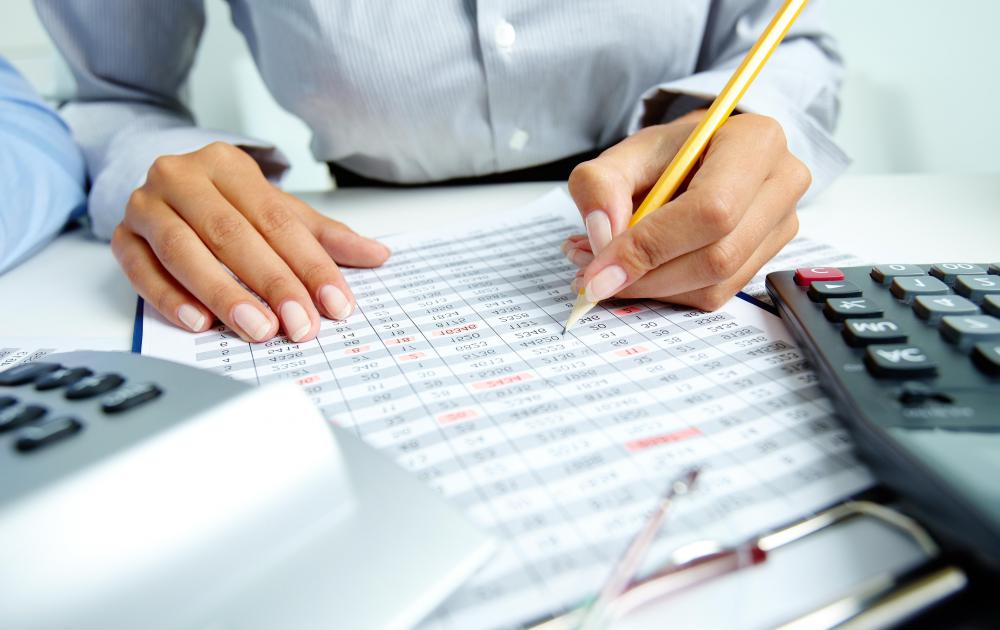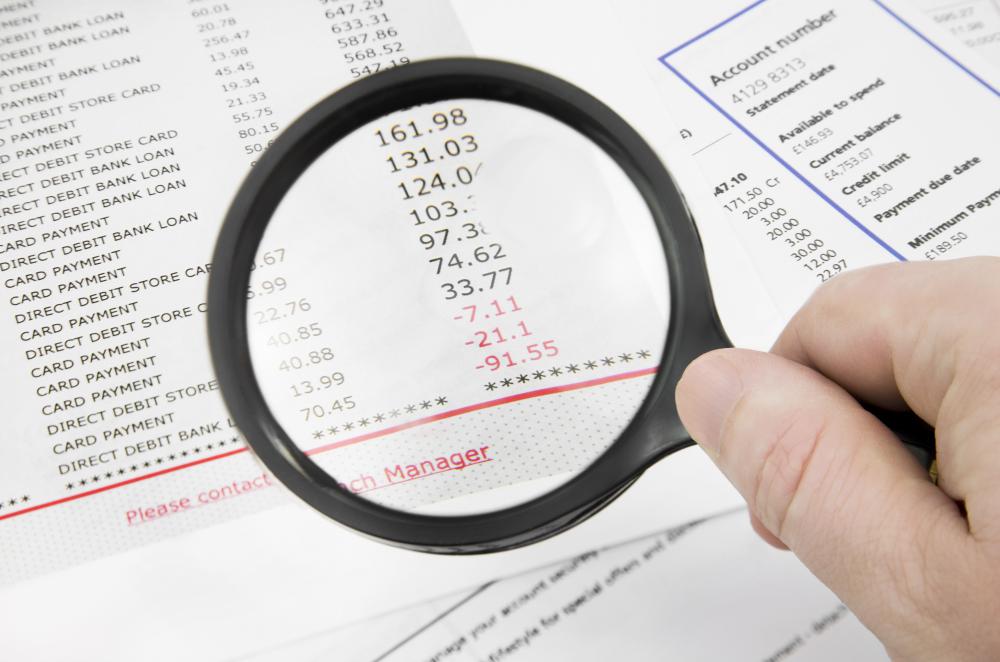At WiseGEEK, we're committed to delivering accurate, trustworthy information. Our expert-authored content is rigorously fact-checked and sourced from credible authorities. Discover how we uphold the highest standards in providing you with reliable knowledge.
What is Account Reconciliation?
Whether managing a household budget with the use of a personal checking account or working in the accounting department of a business, chances are that most people will engage in account reconciliation on a regular basis. Essentially, this process has to do with making sure that the amount of liquid assets shown in the checkbook are identical to the account balance shown on a bank statement as of the same date.
One of the first tools needed for effective account reconciliation is documentation for each transaction conducted in the period of time under consideration. People should keep all deposit slips, records of withdrawals from ATMs, electronic payments, canceled checks, and the last set of bank statements together until they have reconciled the period in question. Being able to quickly verify the beginning balance for the period and then account for each transaction with a document will speed up the process of either affirming that the account holder and the bank are in agreement, or will help her to quickly spot any discrepancies.

Should the account holder find a discrepancy of any kind, she should use her documents to isolate the origin of the issue and get in touch with the bank immediately. For example, she might notice that the beginning balance for the period does not match the ending balance for the previous period, even though everything reconciled at that time. This is a sign that she may need to speak with her financial institution and find out what occurred. Chances are that it is a simple error that will be corrected once it is brought to the attention of the bank. Without having the documents in order and reconciling the account, however, the discrepancy could go unnoticed for months and become very hard to track down.

Account holders should remember to set aside a specific time each month for account reconciliation. Putting off the task will simply make it harder. While this may not be a big problem at first, people should keep in mind that, if there is something to research, it is much easier to do the investigation sooner than later. This is especially true in business, where an employee with an authorized debit card on a travel account may have failed to turn in a receipt. Jogging his or her memory and getting a copy of the receipt will be much easier if the event occurred in the last two weeks rather than two months ago.
AS FEATURED ON:
AS FEATURED ON:














Discussion Comments
@JessicaLynn - That sounds like a good method for someone who doesn't want to carry their checkbooks around all the time. Honestly, I think as long as you have some kind of account reconciliation procedures in place, you'll be fine. It's the people who don't do it at all that I worry about.
A lot of people don't use checkbooks anymore, and instead use their debit cards for everything. I know I don't even carry my checkbook with me, and I can't remember the last time I wrote a check.
I keep track of everything using a spreadsheet on my computer. I use my cell phone to take pictures of all my receipts, and then put the amounts on the spreadsheet at the end of the week. I prefer to go paperless as much as I can, so this method works really well for me.
@Ted41 - I've noticed too that a lot of younger people don't do their own reconciliation of accounts, and instead rely on online banking. Online banking is convenient, but I still think it's a better idea to keep your own records. What if the bank makes a mistake? How will you be able to prove it without your own receipts and records?
@anon34065 - I think a lot of people have no experience with account statement reconciliation these days. I'm in my 20's, so I'm used to doing all of my banking online. In the past, you had to keep your own record of what checks you wrote, and there was no way to check and see what your bank account said without going to the bank or waiting for a statement.
However, now I can check my bank account every day and see the transactions that are posted. I think this is a better way to keep track of thing instead of sitting down and doing it once a month or something.
my debt balance is showing 477233.87, credit balance is 356092.53 and my closing balance is 53105.09 and my opening balance is 174216.43. how to do the reconciliation?
this is a great article for a quick pick up for me, having some background, no experience, not familiar with the jargon...many thanks!! -HL
Post your comments